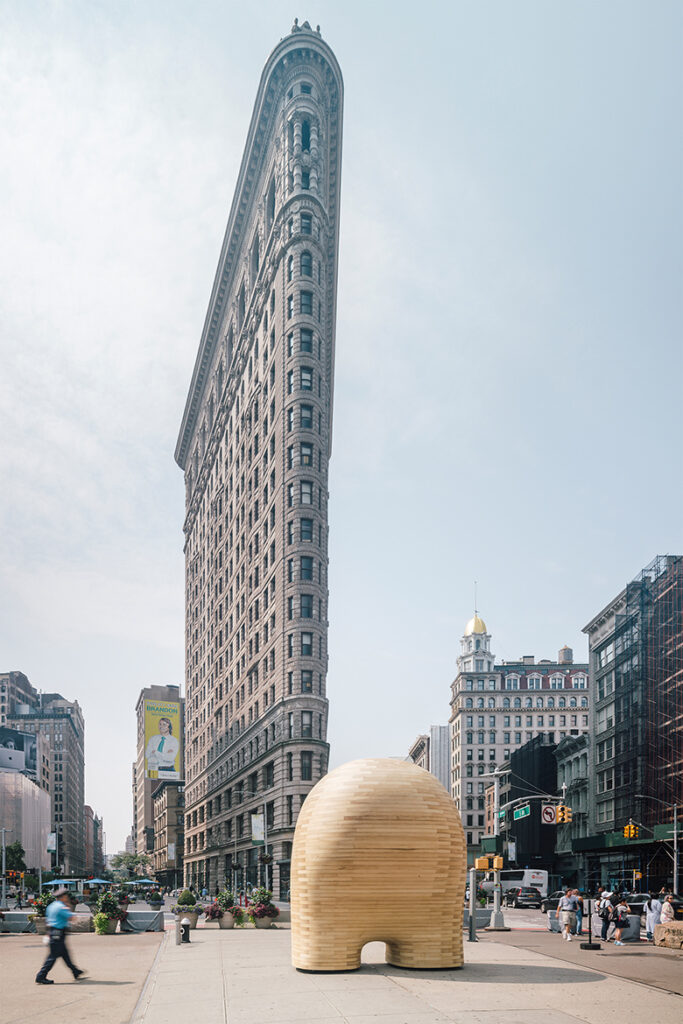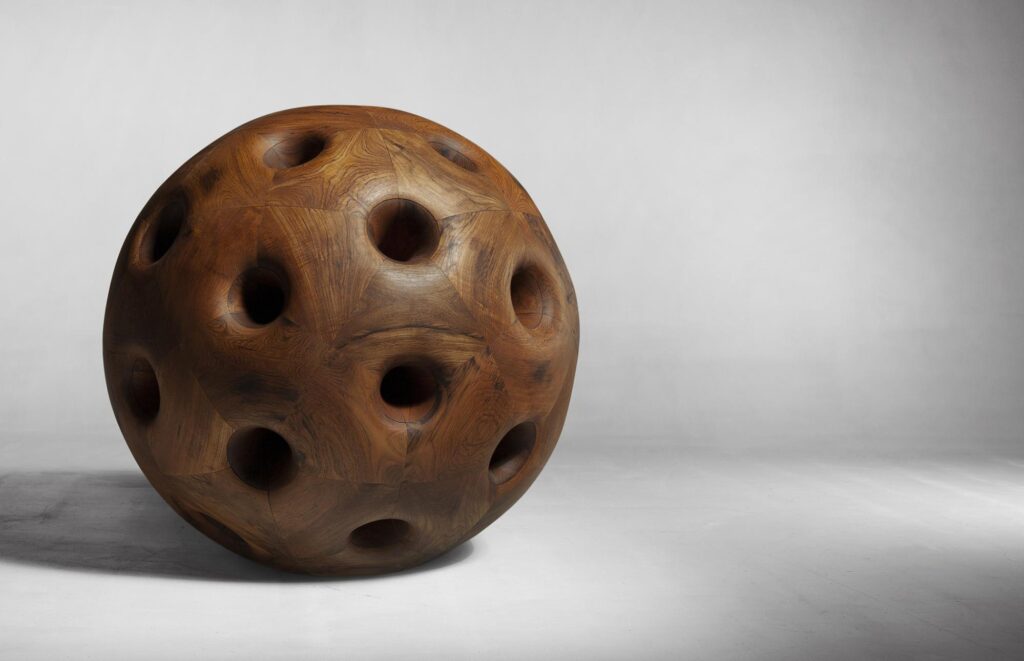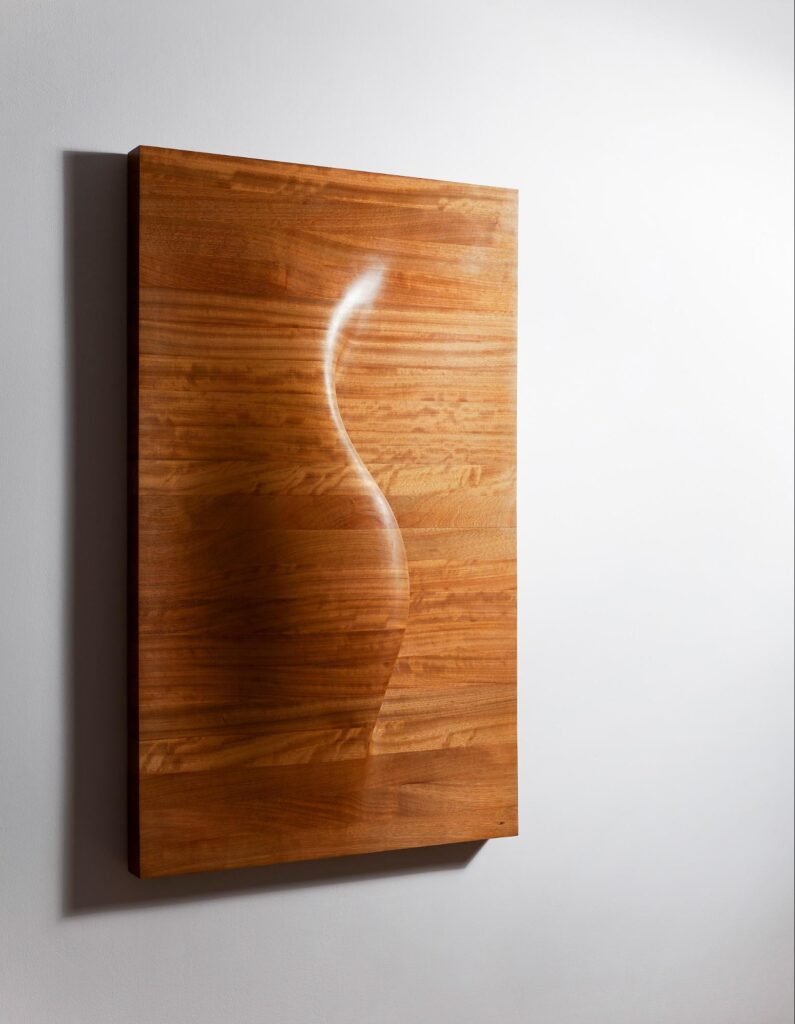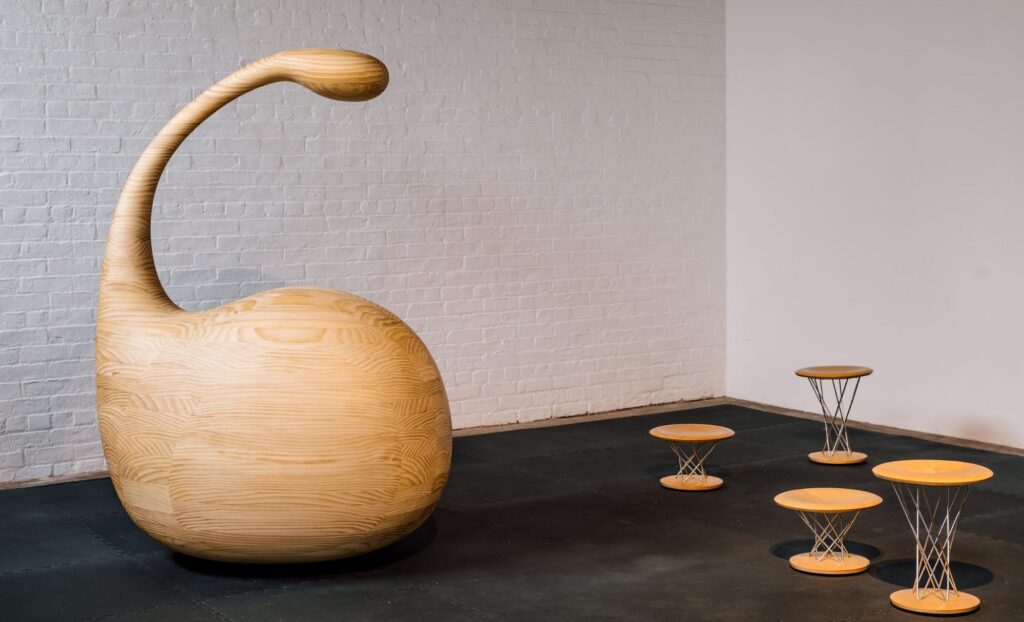Today, I’d like you to meet a sculptor, Jorge Palacios. If you are a New Yorker, you probably walked by his sculpture in the Flatiron plaza more than once. If not, you may have seen his art in SoHo or Chelsea galleries, or at the Noguchi museum. Jorge’s work has also been exhibited in museums around the world, including the Santa Cruz Art Museum, Museum of Fine Arts of Guadalajara, and the Mirador Hall of the Thyssen-Bornemisza, in Madrid, and it may be found in public and private collections in Canada, Switzerland, Spain, and the United States.
Tobi: I’d love to know more details about you, your amazing sculptures and your life in New York. I know you had a major exhibition scheduled for 2020 and it’s incredibly sad that it was postponed due to the well-known circumstances. How are you holding up? I know all plans got cancelled but how did your life change in this pandemic?
Jorge: I have always been a very constructive artist who grows in the face of adversity. I think that every door that is closed creates the opportunity to open another door in another direction. I usually want to think that the new opportunity generated is better than the lost opportunity, and I tend to learn more from unforeseen events or failures than from successes.
I think you end up finding what you are looking for if you are able to search it hard enough or for the time necessary.
Tobi: You are originally from Madrid. Can you compare your experience of being a sculptor in Madrid and in New York City?
Jorge: Nonconformity in New York is a constant. New York is not a city for everyone. It is a city that demands that you give the best of yourself at all times, so consequently, it is a city full of entrepreneurs and fighters. New York does not give anything away, but if you are not afraid to make an effort, this is your place, and here is your chance. New York has helped me as an artist to overcome many limits and to realize that leaving my comfort zone on a regular basis is the hardest but, at the same time, the most productive and efficient way to grow as an artist.

Teak, 78.7 h x 37.4 l x 23.6 w in.
Tobi: Did you always know that you will become a sculptor? What was your starting point?
Jorge: Addressing the third dimension involves a complete compression and evolution from two-dimensional space. I always had the need to express myself through art. I left the two dimensions very early when I found my own language in sculpture.
Tobi: You probably hear a lot from people who have seen your “Link” at Flatiron Plaza. How would you describe this sculpture to someone who has never seen it? What does it link to?
Jorge: Link is connected with many small experiments that I carry out in my work to corroborate the limits of expression and language. It is especially connected with a small sculpture of just 1-foot height with which I was wondering whether it was possible to express monumentality through a work of small format. Affable Geometry is a work that, due to the way it is conceived, quickly imposes its presence and conveys a certain roundness and forcefulness even though it is a particularly small format.
In contrast to this, I decided to corroborate whether a large-scale sculpture could really generate empathy and lightness. And throughout the months that Link was exhibited, I was able to witness how hundreds of people approaching this great element that was the sculpture, felt the need to touch and embrace it. The scale of this work could be compared to someone reaching the corner of a building and feeling the need to hug that wall, but in the case of this work, Link, experience corroborated me that the idea that I had intended to convey, which was materialized through this sculpture, it really connected with the people who inhabited that space.

Accoya, 157½ x 125⅜ x 84⅞ in.
Photos by ImagenSubliminal (Miguel de Guzman + Rocio Romero).
©The Isamu Noguchi Foundation and Garden Museum, NY / ARS and Jorge Palacios.
Tobi: You have an amazing technique of creating sculptures using small segments of wood. Can you talk about your creative process?
Jorge: The technique I use is the consequence of an expressive need to overcome the barrier of the concept of the disturbing element. One of the many ways in which empathy is generated is when the brain recognizes an organic element that contains different levels. For example, the human body is an organism that is subdivided by its function in different systems. These systems are configured based on a series of organs, and these organs are built based on cells.
When you use the same language, the sculpture contains a volume. It is subdivided into pieces, and on these pieces, we can see the wood grain and behind that wood grain is the wood pore.
When the brain subconsciously recognizes these levels, empathy ends up being generated, and this empathy means that, although the object in front of them has no apparent recognizable shape, the viewer feels comfortable with the work before them. And it is then and only then when the viewer finds themself with an open mind as if to perceive some of the other ideas that I intend to contribute through my work.

Teak, 39.37 x 39.37 in.
Tobi: How long does it take you to create a mid-size sculpture? I’m curious about the scale of your artworks. What was the largest piece that you’ve created and what was the smallest one?
Jorge: With the resources that I have and my team, I can tackle large-scale projects like Link in periods that would surprise many, but the challenge does not lie in production but conception.
An idea is not finished in my mind until each and every detail it contains is perfectly defined. The conception of the idea is rarely easy. And only after many hours do you arrive at the synthesis of simplification. An idea is born simple, it is a gesture, it is a stroke, it is a concept or a sensation, but that concept quickly fills with nuances, construction problems, engineering challenges, and becomes something tremendously complex, both expressively and technically. That’s where the really hard part begins, that is select among all the nuances which are superfluous and which are essential and make any technical challenge that underlies your production completely disappear.
There is a phrase from a jazz musician I admire a lot, Charles Mingus, who says the following: “Making the simple complicated is commonplace; making the complicated simple, awesomely simple, that’s creative.”
Tobi: Do you use any digital tools? And in terms of materials – you mostly work with wood, right? Is there anything else that catches your attention?
Jorge: Need makes the man. In my case, what few people know is that, in order to achieve the qualities and formats that the ideas I want to express require, 15 years ago, I had to personally learn deep knowledge of robotics, engineering, electronics, and mechanics to build myself a large robot CNC with which I have been building my sculptures for years.
Now I am working with wood with a precision similar to those used in the aerospace industry with high-tech materials.
There is no artistic need on my part to use aerospace technology or a hammer and gouge, in fact, I usually need both technologies in most of my work. It is the effectiveness of one or another technique to carry out a certain project that underlies.
In the same way that I could tell you that wood is not important to me, it is the support that transmits the idea, the necessary support. Therefore, my favorite material as an artist are ideas.
In my work there are ideas that need to be emphasized through the constructive organization provided by the construction by levels, generated by the composition of a block based on horizontal wooden logs. In other projects, which require other ideas, I am trying to express without the horizontal lines being necessarily so present.
In fact, there are some projects in the near future that are planned and developed to be executed in other materials. For instance, a technology that could be efficient for this could be the binder-jetting from Kwambio or 3D Systems using ceramic or sandstone materials as a final result. This could allow me to create a large volume based on a lot of small pieces that function as cells of a great whole.
In the same way, I could mention materials such as Krion, which allow me to make large volumes for exteriors without joints, and that is something that can be said of few materials, in addition to its versatility as a conformable material that it is.
Tobi: What have been your most recent works?
Jorge: The last sculpture I have finished, Dark Matter, has been a commission for a private residence in California. The work is born from the reflection about what form the Dark Matter could have. The previous conversation I had with the collector was very enriching since he is, among many other things, a physicist and patron of MIT.
Moreover of this work, other recent sculptures are currently being presented at the Wurth Museum in the exhibition Spanish Art and the Würth Collection, which is curated by the renowned art historian Kosme de Barañano, and in which I participate along with Barcelo, Tapies, Chillida , Calatrava, Mascaro, Miquel Navarro, and Plensa, among others. There, the work Evolution, a 12-foot-tall sculpture, and piece The Fold were presented to the public for the first time.

Iroko, 57.9 x 34.6 x 6.7 in.
Tobi: Can you name a few artists whose work you wholeheartedly admire?
Jorge: Escher used to say, “My work is a game, a very serious game“. He used his knowledge of optics and perspective to make the viewer reflect through the play on the understandable physical space. In my case, my work plays with the limits of language, exploring the understanding of collective empirical knowledge.
Harold Edgerton was interested in capturing the invisible world that passes too fast before our eyes. On my end, in some of my works, I explore the moment stopped in time, and I try to validate the idea of whether it is possible to express movement through a static element.
As an artist, I am passionate about Bucky Fuller or Nikola Tesla. And of course, I could talk for hours about the work of Isamu Noguchi or Eduardo Chillida.
Tobi: What is the most challenging part in the process of creating a new sculpture?
Jorge: Each work hides a subtle sensation, a feeling, an emotion. Something that made me vibrate and that set me going forward in a certain direction. In many of the works of my career, I explore the limits of language, trying to express with volume abstract concepts that lack a definite form such as balance, speed, or perseverance. The challenge when creating is to convey these sensations to the viewer even though there is no universal visual language for it.

Installation view, Jorge Palacios at The Noguchi Museum , Long Island City, NY, September 26, 2018–January 20, 2019.
Photos by ImagenSubliminal (Miguel de Guzmán + Rocío Romero).
©The Isamu Noguchi Foundation and Garden Museum, NY / ARS and Jorge Palacios.
Tobi: What inspires you the most? Is there anything that sparks your imagination from your surroundings?
Jorge: I am inspired by understanding the fundamentals behind the simplified morphological designs of evolution. Nature synthesizes and simplifies when it constructs and reconstructs and inspires me to understand the physical performances of the universal laws that limit the designs of nature.
Morphology necessarily follows these physical limits, understanding physical limits as the limit of the behavior of materials and their interaction with gravity. For example, I am interested in surface tension when it comes to understanding that the brain recognizes as a liquid element when interacting with gravity.
By understanding what elements are involved in the shaping of a certain structure, it is possible to replicate not only its morphology but also the underlying and inherent linked sensations of that certain volume.

Hard maple, 11 13/16 x 19 11/16 x 19 11/16 in.
Tobi: Can you name three favorite items from your studio? It could be furniture, paperweights, or anything else.
Jorge: The first element would undoubtedly be Google. Google is, for me, the place to go in search of deep knowledge about physics, geometry, optics. The place to find formulas on how to apply the Bezier curve, Voronoi or the Golden ratio in my work, and an unbeatable tool where to find images about cellular structures, the curves that glaciers generate when melting or understand the behavior of smoke.
The second element, without a doubt, is my trumpet, which reminds me every time I play that musical performance is not one of my virtues but above all, which reminds me that jazz is one of the great passions that inspire my work. Jazz plays with what one would expect on a familiar score, stepping out of that score to surprise the public with a little wink, a personal contribution, or a reflection of how a few other notes might also fit into that context.
The third element would be my fantastic camera Leica, which is another of my passions. It allows me to capture moments of inspiration and document my artistic work. Sometimes the life that passes before our eyes is better understood when you can analyze it stopped in time.

